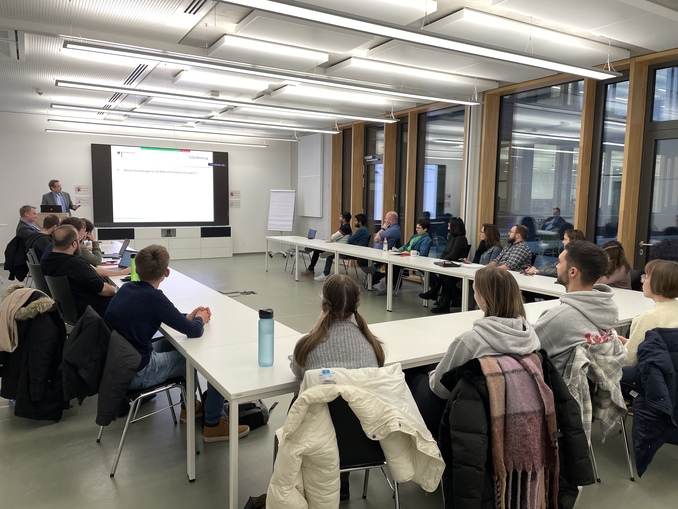Criminals convicted thanks to material analyticsTwo representatives of the Federal Criminal Police Office reported from their everyday work

Dieter Neimke vom Bundeskriminalamt erklärte, wie Schmauchspuren beim Abfeuern einer Waffe entstehen und wie sie mit verschiedenen Mikroskopen etwa an der Hand oder Kleidung des Täters nachgewiesen werden können. Foto: © Hochschule Aalen | Andrea Heidel
About 20 on-site and about 40 online participants followed the invitation of the Jung-DGM Aalen to the lecture evening in the research building of Aalen University. Fabian Altermann and Dieter Neimke, employees of the Federal Criminal Police Office in Wiesbaden, reported entertainingly about their daily work. They demonstrated how material analysis could be used to solve criminal cases and convict perpetrators.
"The Jund-DGM Aalen is a local, regional group of students and doctoral candidates in the field of materials science and materials engineering," explains Felix Trauter, a student at Aalen University and organizer of the evening. The young scientists organize events and lectures related to materials science at changing locations.
The entertaining start to the year was recently given by Fabian Altermann and Dieter Neimke from the Federal Criminal Police Office, providing exciting insights into the work of a forensic scientist. "This can be used to examine everything that a perpetrator leaves behind at the scene of a crime," the speakers emphasized: Whether it's fibers, gunshot residue, chemical substances, or bodily fluids - thanks to X-ray fluorescence analysis, scanning electron microscopy, focused ion beam microscopy or SEM-EDX particle analysis, even particles in the sub-micrometer range can be analyzed in the most precise way. "Planning for this year's lectures is already underway. Upcoming events will be announced promptly via the DGM website," announces Trauter.
